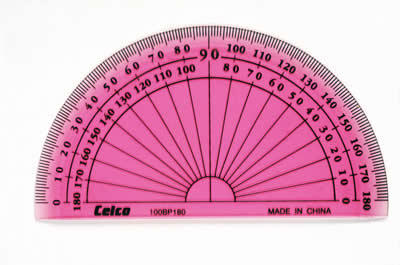|
|
www.trustdeed.com.au provides online service for creating, storing & managing legal documents for Companies and Trust deeds for SMSF, Family, Unit & Fixed Trusts, SMSF related documents click here for more information. |

Can you or your partner audit the SMSF where your firm has provided "other services" including preparing financial statements for the fund from 1st January 2013?
But first, a little about us and 2012..... | |
Hi,
We are a bit late to wish you a happy new year!
Better late then never...
Our 2012 Year

2012 Year was a hectic year for us - we launched 6 new modules and created www.onlinesmsfaudit.com.au - to be delivered soon - 2012 also saw our 10,000 registered user go online and our 25,000th company incorporated online on ASIC Servers.
Over 2,200 Actuarial Certificates were issued which is and remains the only truly online service and the cheapest (only $82.50 Incl. GST) in Australia. None of our products prices were increased but prices of three popular products were reduced.
However in 2012, our communication with our subscribers was spotted - but this year we promise to communicate at least fortnightly and like always, will concentrate on strategies instead of simply telling you changes which ATO or other authorities announce.
Our Mission
We have only one mission, which is to create a Win - Win - Win situation for yourself, your clients and our product providers by building world class online interface secure delivery systems which are not only user friendly but also bring to you and your clients the best products - deeds, companies etc - at the cheapest prices. Everybody Wins!
Our purpose can be summarised as

Best legal Document
Best Delivery Method at the
Best Price
In 2013 we also promise to come up with modules and services which will make life easier and cheaper due to our in-house expertise and capability to build reliable online secure systems for practicing accountants, financial planners and others who work with standard legal documents. Our thrust has and will remain in SMSF, online companies and Trust Structures.
2013 is going to be a big year especially for SMSF auditors and on how they audit and who they can audit from 1st July with compulsory registration and new independence requirements which commenced on 1st January 2013.
Auditors whose related entities which provide administration, such as preparation of financial statements, income tax returns or offer financial advice or other services to SMSF clients should note that Superannuation Industry (Supervision) Amendment Regulation 2012 (No. 6) was enacted on 6th December 2012 and amends among other things, auditor registration requirements and the new independence requirements under SISR 9A.06 which commences on 31 January 2013.
SIS Regulation 9A.06: Auditor independence requirements commence from 31st January 2013
SIS 9A.06 relies on Auditor independence requirements that are produced by the Accounting Professional and Ethical Standards Board Limited and set out in the APES 110 Code of Ethics for Professional Accountants that are prescribed for all approved SMSF auditors who are members of CA, CPA and IPA and commence from 31st January 2013.
Please note that members of NTAA, ATMA and SPAA can also audit SMSF's along with registered company auditors under Section 128 of SISA and Schedule 1AAA of SISR, however the writers understanding is that their competency requirements are even stricter than APES 110.
Copy of the APES 110 Code of Ethics for Professional Accountants is available at www.apesb.org.au and can be downloaded by clicking here.

The compiled Standard takes into account amendments up to and including December 2011 and was prepared by the Technical Staff of APESB and is operative from 1st January 2013.
APES 110 is a 135 page document, Clause 290 covers Auditor Independence issues. The way the APES are written, it seems that the board members were looking at situations where the professional body member would be auditing companies and other reporting entities and not SMSF's and hence does not specifically describes SMSF situations. It seems that after passing of legislation APESB needs to re-write some of the clauses of APES 110.
We provide below paragraphs from APES 110, which insinuate that if your firm is providing "other services" including preparing financial statements, then no employee or partner of your firm can be a member of the audit team as there are not enough safeguards to eliminate self review and self interest threats which impede your independence (specifically clause 290.168).
Our role is not to tell you what you should do, however we strongly recommend you that read the below information and before you sign off your next SMSF audit, discuss your situation with your professional body.
Providing other services
290.146 If a partner or employee of the Firm serves as a Director or Officer of an Audit Client, the self-review and self-interest threats created would be so significant that no safeguards could reduce the threats to an Acceptable Level. Accordingly, no partner or employee shall serve as a Director or Officer of an Audit Client.
AUST290.146.1 If a partner or employee of the Firm were to serve as an Officer (including management of an Administration) or as a Director of an Audit Client, or as an employee in a position to exert direct and significant influence over the subject matter of the Audit Engagement, the threats created would be so significant no safeguard could reduce the threats to an Acceptable Level. Consequently, if such an individual were to accept such a position the only course of action is for the Firm to refuse to perform, or to withdraw from, the Audit Engagement.
Preparing Accounting Records & Financial Statements

290.167 Management is responsible for the preparation and fair presentation of the Financial Statements in accordance with the applicable financial reporting framework. These responsibilities include:
Ø Originating or changing journal entries, or determining the account classifications of transactions; and
Ø Preparing or changing source documents or originating data, in electronic or other form, evidencing the occurrence of a transaction (for example, purchase orders, payroll time records, and customer orders).
290.168 Providing an Audit Client with accounting and bookkeeping services, such as preparing accounting records or Financial Statements, creates a self-review threat when the Firm subsequently audits the Financial Statements.
290.169 The audit process, however, necessitates dialogue between the Firm and management of the Audit Client, which may involve (a) the application of accounting standards or policies and Financial Statement disclosure requirements, (b) the appropriateness of financial and accounting control and the methods used in determining the stated amounts of assets and liabilities, or (c) proposing adjusting journal entries. These activities are considered to be a normal part of the audit process and do not, generally, create threats to Independence.
290.170 Similarly, the client may request technical assistance from the Firm on matters such as resolving account reconciliation problems or analysing and accumulating information for regulatory reporting. In addition, the client may request technical advice on accounting issues such as the conversion of existing Financial Statements from one financial reporting framework to another (for example, to comply with group accounting policies or to transition to a different financial reporting framework such as International Financial Reporting Standards). Such services do not, generally, create threats to Independence provided the Firm does not assume a management responsibility for the client.
|
|
Does your SMSF have assets which are not in the Trustees name
ITF the <name of the SMSF>?
If Yes, You need a
Declaration of Trust / Acknowledgement of Trust
Click here to Oder Declaration of Trust
|
Legal Requirement for Declaration of Trust / Acknowledgement of Trust

Regulation 4.09A of SIS Regulations requires that trustees of a SMSF keep money and other assets of the fund separate from any money or assets held by trustees personally. Further, ATO in its media release Nat 2005/37 warns that all assets of a self managed super fund must be appropriately recorded to show correct ownership by the fund, this generally means that all SMSF assets must be held in the name of the trustees "on behalf of the fund". | |
|
| |
Regulation 4.09A is a prescribed standard applicable to the operation of all superannuation entities including SMSF's. Section 34 of the SIS Act provides that a person who intentionally or recklessly contravenes this standard is guilty of an offence punishable on conviction by a fine not exceeding 100 penalty units - this translates to a penalty of $11,000. | |
|
| |
Lastly, under Section 52(2) (d) of the Superannuation Industry (Supervision) Act 1993, SMSF trustees are required to keep fund assets separate from their personal assets. Trustees of Self Managed Super Funds must also ensure that the fund's assets are held in a legally recognised
ownership arrangement.
When Does your SMSF need a Declaration / Acknowledgement of Trust
| |
Some offices of state revenue (e.g. NSW) do not recognize a trust arrangement, which means that the assets of the self managed super fund are held only in the name of the "trustees" without mentioning that the asset is held "by the Trustees on behalf of the self managed super fund". | |
|
| |
For example, if you have two individual trustees of a self managed super fund; Mr Jack Brown and Mrs Jenny Brown and if their self managed super fund named "Brown Family Super Fund" purchases a real property, the title deed registered by the office of state revenue of NSW will have only the names of the two individual trustees on the title deed of the property and will have no mention that the two trustees are holding the property on behalf of their self managed super fund. | |
|
| |
Hence, to comply with Section 52 (2) (d) of the SIS Act and to satisfy the auditor of the self managed super fund, a declaration of trust or an acknowledgement of trust has to be executed to ensure that the asset is held "on behalf of the self managed super fund" and not in their own benefit. In other words, a declaration has to be made, that they are not the real owners of the asset although the asset is legally in their own name. In absence of such a declaration, it would seem that they are also the "real owners" as well as "legal owners. | |
Why do you need a Declaration / Acknowledgement of Trust

In most cases assets of a self managed super fund like bank account or Australian shares etc, a trustee will not require a declaration of trust or an acknowledgment of trust as the title of the ownership document will be clearly marked that they (trustees) are holding the asset "In trust for" or "As Trustee for" the self managed super fund. Declaration or Acknowledgement of Trust is required only where statue legislation or any law prohibits the trustee to record the name of the self managed super fund as a beneficial (real) owner of the asset. | |
|
| |
Some assets acquired by a self managed super fund outside Australia may also not be able to be registered in the correct manner, that is, the title deed of the asset may not clearly demonstrate that a trust relationship exists between the trustee and the fund; In these situations trustees must execute a declaration of trust or an acknowledgement of trust. | |
|
| |
SMSF auditors must also insist that trustees of a SMSF execute declaration of trust or an acknowledgement of trust and have an executed copy in their permanent working papers file. Guidance Statement GS 009 Auditing Self-Managed Superannuation Funds and read paragraph 328. Note that auditors must report any non-compliance of Section 52 (2) (d) of SIS Act in an Auditors report and in ATO's contravention report. | |
Difference between Declaration of Trust and Acknowlegement of Trust

Two different types of documents can be executed to declare or affirm a trust relationship exists between the asset of the SMSF and the trustees of the SMSF. The two documents are similar and to choose which document to use in your situation depends on when the asset was purchased and when the document is being executed by the trustees. If you are not sure which document to use, please ensure that you have taken suitable accounting and legal advice. | |
|
|
| | |
Declaration of Trust is used where the trustees intends to acquire the property for and on behalf of SMSF in a future date. A declaration of trust clearly establishes the relationship between legal owners and beneficial (real) owners of the asset.
Legal owners act merely as trustee(s) for and on behalf of the beneficial (real) owners.
This document is executed before a purchase of an asset is made. |
Acknowledgement of Trust is used where the trustees have already acquired (in the past) an asset and are currently holding the asset for and on behalf of SMSF.
This document assumes that the Trustees have not executed a Declaration of Trust and the asset is already registered in their (trustees) name.
Acknowledgement of Trust is a document to acknowledge a trust relationship between the fund and trustees and to affirm that the trustees are holding the asset for the benefit of SMSF from the date of purchase. |
| |
|
| |
Please note that you will need only one of the two documents for any one particular asset.
Each asset will require a separate declaration of trust. |
|
|
|
WWW.TRUSTDEED.COM.AU
HOW IT WORKS
Our oline ordering system is very simple, once you are registered with us, log in and answer to our smart and easy structured questions - clues and explanations are provided. Once you pay our low fee, perfectly customized legal documents are emailed to you, instantly.
The whole process takes not more than 20 minutes!

|
Every legal document purchased from us is reviewed by our support team for all structural issues, mergers, apparent spelling inaccuracies, address problems etc.

Sales Team
Deed Dot Com Dot Au Pty Ltd |
|
|